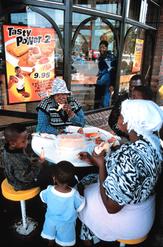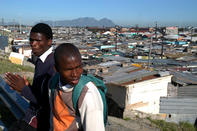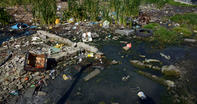Holding Individuals Responsible

So, we are fat. It is our fault. We are simply greedy and lazy. Just stop eating so much. Get off the couch and move your body! Some experts call for greater regulation of the fast food industry, particularly in how they market their products to ‘vulnerable’ youngsters. That is pretty much how society views the problem with fat: individual choice, individual bad habits, individual responsibility.
Even top-end experts in the field, such as Dr Benjamin Caballero from the Center for Human Nutrition at the Johns Hopkins Bloomberg School of Public Health in the United States, put it like that (only in slightly more measured tones): ‘Historically,’ writes Caballero in the Epidemiologic Reviews in 2007, ‘human obesity was commonly associated with gluttony and lack of self-control at the table.’ And yes, there is some truth in this understanding of the problem.
But that is not the whole story. Now that more attention is being given to the ‘external determinants of the energy balance’ – what are the environmental factors enabling our increasingly unhealthy relationship with food? – it seems that the solution to the problem, in terms of treatment and prevention, needs to shift away from the somewhat tunnel-visioned approach of addressing individual behaviour.
Challenges in the Built Environment
‘The “built environment” represents the working and living conditions collectively created by societies and is a key determinant of opportunities and restriction to food consumption and physical activity,’ writes Caballero.
Furthermore, we are not going to make a meaningful dent in the growing obesity problem if we think it is enough to simply encourage people to ‘reduce their risk factors and adopt healthier lifestyles’, writes the University of the Western Cape’s Professor Mickey Chopra in a 2002 World Health Organization (WHO) bulletin, because ‘increasingly obesogenic environments, reinforced by many of the cultural changes associated with globalization, make even the adoption of healthy lifestyles, especially by children and adolescents, more and more difficult’.
The things about our built environment that are most likely to push us to the wrong side of our ideal weight, according to Caballero, are urban planning that keeps us in our cars criss-crossing a gridded city’s vast sprawl, rather than on our feet; a shortage of safe, wide open public spaces to play in, and the kind of environment that makes it safe for children to walk to school; ‘the pervasive presence of food outlets and opportunities to eat, usually fast, energy-dense foods’; and the ‘increasing dependency on prepared foods, usually consumed away from home’.
Taking a step back from the ‘it’s your problem, Mr and Mrs Individual’ approach requires us to look at the challenges inherent in the broader food system and city design to see how they impact on the choices and lifestyle of the individual. This might mean a policy-level approach, civil society action, roping in the urban planners or the cooperation of retailers.
Counting the Number of People

UN-Habitat points out the need to know just how many people really are living in our informal settlements if city planners are to cater for their needs appropriately. ‘It is virtually impossible to plan housing or infrastructure without knowing how many people live within municipal boundaries,’ its 2010 State of African Cities says.
But the very nature of slum life means its residents’ lives are fluid, often moving between rural homelands and new city lives, or between different parts of the city. This dynamic nature of slum-dwelling populations is typical the world over and makes planning, town development and service delivery difficult. ‘Policymakers and planners need to take such fluidity into account when planning the shelter needs of the poor,’ UN-Habitat states.
Building Systems Right
Municipalities carry the burden of having to ensure that drainage and stormwater management are in good working order, particularly in low-income urban communities, since, according to the United Nation’s Intergovernmental Panel on Climate Change (IPCC) 2007 report on the impact on human health of rising global temperatures and associated extreme weather events, there is a strong link between blocked city drains and increased transmission of disease.
‘Climate extremes cause both physical and managerial stresses on water supply systems, although well managed public water supply systems should be able to cope with climate extremes,’ says the IPCC, something that could ‘represent an increased challenge to water-treatment plants’.
Linkages with UN Priority Areas

The food system is complex and multifaceted. Looking at the United Nations’ five priority areas for sustainable development – biodiversity, agriculture, water and sanitation, energy and health – there is a link to food security in every area.
‘Food security, climate change and sustainable development are intimately connected in a web of feedback processes and outcomes – the extent to which these are positive or negative depends on how these relationships are conceptualized and managed,’ write the University of Cape Town geographer Dr Gina Ziervogel and the University of Waterloo’s Dr Bruce Frayne.
In order for city managers to deal with the vulnerability of the urban poor in the context of access to regular, nutritious, sanitary food, they might want to think about the following areas where sustainable city growth and management intersect with food security.
According to Ziervogel and Frayne, food security overlaps with the five United Nations areas in the following ways:
Water and sanitation: rainfall, drought, irrigation, water quality, conservation, urbanisation.
Energy: fossil fuels, land change, transport, processing, consumption, wildlife.
Health: chemicals, pollution, food quality, safety, diet and disease, access.
Agriculture: industrial farming, local and alternative models, organics, markets.
Biodiversity: mono crops, fisheries, biotech, genetics, ecology, extinction.